

| July 31, 2002 |
 |
|---|
A lot of planning has gone into developing the 2002 Big Country Wheat Conference to be held in Abilene, Texas on August 22. There are a number of excellent speakers on the program and it will be worth your time and effort to attend. Click here for an agenda.
Wheat variety test results varied greatly due to location and timeliness of the rain. Currently, the raw data is all that I can provide you, which includes:
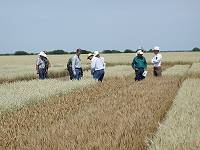
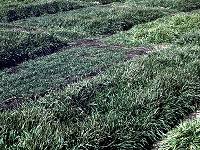 It is time to start planning our Fall test plots. Like the last few years I will attempt to find the lowest price quality seed for our tests. Wheat seed has been averaging $9.00 per bag. Some of the limited varieties have cost as much as $20 for a fifty pound bag. Variety tests can be designed to look at grain production, forage production or both. Seed may be needed for grazing studies (looking at planting date and/or livestock removal date), seed treatment studies, and/or small grain comparison tests. Other types of demonstrations include fertility and weed control tests. Last fall several forage tests were established using different types of ryegrass. If you want to include ryegrass in your forage tests in 2002-2003 let me know, it takes a while to get it here (cost was $45 per bag for some varieties). For weed control we will be looking for plots that have problems with Wild oats, Ryegrass, Rescuegrass, or Jointed Goatgrass. If your not sure what Jointed Goatgrass is, please refer to the linked publication "Jointed Goatgrass Ecology".
It is time to start planning our Fall test plots. Like the last few years I will attempt to find the lowest price quality seed for our tests. Wheat seed has been averaging $9.00 per bag. Some of the limited varieties have cost as much as $20 for a fifty pound bag. Variety tests can be designed to look at grain production, forage production or both. Seed may be needed for grazing studies (looking at planting date and/or livestock removal date), seed treatment studies, and/or small grain comparison tests. Other types of demonstrations include fertility and weed control tests. Last fall several forage tests were established using different types of ryegrass. If you want to include ryegrass in your forage tests in 2002-2003 let me know, it takes a while to get it here (cost was $45 per bag for some varieties). For weed control we will be looking for plots that have problems with Wild oats, Ryegrass, Rescuegrass, or Jointed Goatgrass. If your not sure what Jointed Goatgrass is, please refer to the linked publication "Jointed Goatgrass Ecology".
Field preparation for planting small grains should be completed soon so the seedbeds have time to firm. Volunteer plants and weeds serve as host for insects and disease and need to be terminated a minimum of two weeks before planting. The use of a burndown herbicide will also work, but it will be challenging to kill moisture stressed weeds.
Shown are six weeds that are developing in cropland and barditches at this time.
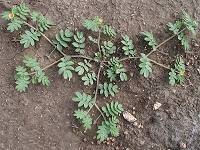 Hairy Caltrop Kallstroemia hirsutissina |
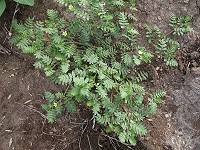 Puncturevine Tribulus terrestris |
Hairy Caltrop emergence has been higher than normal due to the rains in July. Hairy Caltrop has a larger stem, larger leaf, different flower and seed when compared to puncturevine. |
|---|---|---|
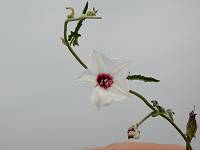 Texas Bindweed Convolvulus equitans |
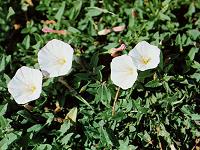 Field Bindweed Convolvuluc arvensis |
Texas Bindweed and Field Bindweed are similar, but take a closer look at the flower and the leaf margin edge. |
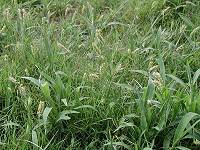 Field Sandbur Cenchrus incertus |
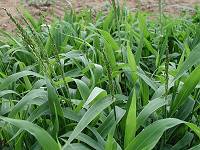 Texas Panicum Panicum texanum |
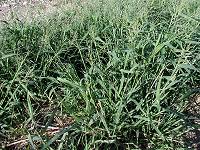 Browntop Panicum Panicum fasiculatum |
Some of the cotton is progressing at a rapid rate and may be ready to terminate by the end of August. If your planning to conduct cotton harvest aid termination tests let me know.
On August 12, there will be a training conducted at Abilene for producers needing to obtain a Private Applicators license. For more details and to register for the meeting call Gary Bomar at (915) 672-6048.
If you have a training where CEUs are offered, please let me know.
 August 1 - 8, Annual Leave, Office Conference
August 1 - 8, Annual Leave, Office Conference
 August 12 - 16, Brazos County, Staff Conference
August 12 - 16, Brazos County, Staff Conference
 August 16, Tom Green County, Professional Ag Workers Meeting
August 16, Tom Green County, Professional Ag Workers Meeting
 August 19, Schleicher County, Small Grain Production Meeting
August 19, Schleicher County, Small Grain Production Meeting
 August 20, Brown County, Stocker Cattle and Forage Production Meeting
August 20, Brown County, Stocker Cattle and Forage Production Meeting
 August 22, Taylor County, Regional Wheat Conference
August 22, Taylor County, Regional Wheat Conference
 August 27, Scurry/Borden County, Cotton, Range and Forage Tour
August 27, Scurry/Borden County, Cotton, Range and Forage Tour
 August 30, Tom Green County, Southern Rolling Plains Ginners Asso. Meeting
August 30, Tom Green County, Southern Rolling Plains Ginners Asso. Meeting
 September 2, Holiday, Labor Day
September 2, Holiday, Labor Day
 September 6, Tom Green County, Sheep and Goat Field Day
September 6, Tom Green County, Sheep and Goat Field Day
 September 9, District 7 Office, Office Conference
September 9, District 7 Office, Office Conference
 September 10, Glasscock County, Multi-County Cotton Tour
September 10, Glasscock County, Multi-County Cotton Tour
 September 10, Reagan County, Master Gardener Program
September 10, Reagan County, Master Gardener Program
 September 17, Runnels County, Cotton Tour
September 17, Runnels County, Cotton Tour
 September 18 & 19, District 6 Office, Multi-County Crops Meeting
September 18 & 19, District 6 Office, Multi-County Crops Meeting
 September 20, Tom Green County, Professional Ag Workers Meeting
September 20, Tom Green County, Professional Ag Workers Meeting
 September 23, District 7 Office, Specialist Scheduling
September 23, District 7 Office, Specialist Scheduling
 September 24, Brown County, Hay Show
September 24, Brown County, Hay Show
 September 26, Tom Green County, Cotton Tour
September 26, Tom Green County, Cotton Tour
 September 30, Bandera County, Soil and Crop Sciences Project Group Meeting
September 30, Bandera County, Soil and Crop Sciences Project Group Meeting
| Sincerely,
|